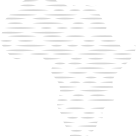Here you will find the open-access bii4africa dataset, which was co-produced by 200 experts in African biodiversity. It contains intactness scores representing the remaining proportion of intact populations of terrestrial vertebrates (tetrapods: ±5,400 amphibians, reptiles, birds, mammals) and vascular plants (±45,000 forbs, graminoids, trees, shrubs) in sub-Saharan Africa across the region’s major land uses (urban, cropland, rangeland, plantation, protected, etc.) and intensities (e.g., large-scale vs smallholder cropland).
Sub-Saharan Africa is critically underrepresented in global biodiversity datasets. Such data is urgently needed to mainstream biodiversity into national and international policy and planning, especially data that can give insight into how humans are impacting biodiversity in ways that reduce its ability to support the ecosystems on which our societies depend. We address this data gap through a structured expert elicitation process involving 200 experts in African fauna and flora to estimate the impact of Africa’s diverse human land use activities on the population abundances of indigenous species. It took four years and 200 people to co-produce this dataset. You can also learn more about the landscapes in which these experts work by exploring this google earth story.
The dataset is published in Nature’s peer-reviewed data journal, Scientific Data, and available open-access. We are using the data to map Africa’s Biodiversity Intactness Index. Additional uses include assessing ecosystem condition; rectifying geographic/taxonomic biases in global biodiversity indicators and maps; and informing the Red List of Ecosystems.
Clements et al. 2024. The bii4africa dataset of faunal and floral population intactness estimates across Africa’s major land uses. Scientific Data. 11, 191. https://doi.org/10.1038/s41597-023-02832-6
This is an info box
Write a short description, that will describe the title or something informational and useful






